8 Drop Sets to Build Serious Strength
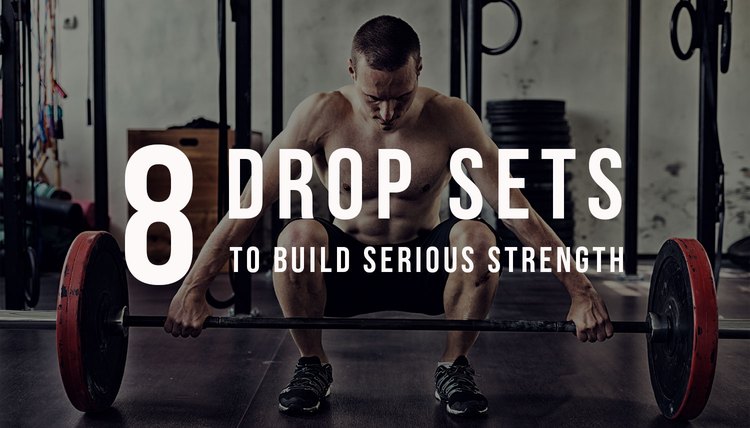
For your body to continuously adapt and make progress, your training routine has to keep challenging your muscles. To do that, you have use more overall load. While adding more resistance or more sets or reps will do the trick, incorporating intensity boosts might be a more effective method. There are many ways to add intensity boosts, but mechanical drop sets — a less commonly discussed method — just might be the answer to new gains.
What Are Mechanical Drop Sets?
Mechanical drop sets (MDS) are one of many intensity-boosting techniques that allow you to extend a set, which provides more overall volume and total load for that set. MDS take advantage of physics -- specifically, mechanical advantage to extend a set and keep the intensity high. This is the perfect combination to spur greater strength, size and fat-loss results. Depending on the exercise, you can manipulate grip, stance, limb use or path of movement with respect to gravity to make an exercise easier mechanically as the body fatigues. This allows you to keep intensity high without compromising form and increasing injury risk. Another great thing about MDS is that you’ll use the same resistance throughout the drop set, so there’s no wasting time switching resistances.
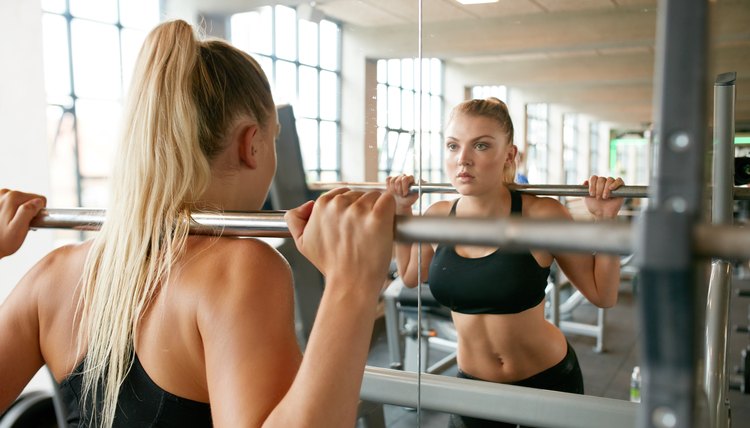
Martin Dimitrov
How and When to Use Mechanical Drop Sets
To perform MDS you will work until “pre-technical” failure (as many reps as possible with perfect technique and form) before switching to the next variation of the exercise. At no point should you work to technical failure, as the fatigue from the extended set will cause greater compensations to occur that will place you at a greater risk for injury. An MDS can have one to three drops within the set, depending on the exercise and your current condition, goals and overall training volume. If you’re a new trainee, one drop set per exercise should suffice. For those who have a few years of training experience, one to three drops within the set will provide the necessary stimulus to spur gains. As with any other intensity-boosting method, you don’t want to overdue it with drop sets. Performing an MDS on the last set of an exercise is an effective way to take advantage of the benefits of extending the set without decreasing subsequent performance. You can perform up to two weeks utilizing MDS during your sessions before it is encouraged to switch back to traditional sets.
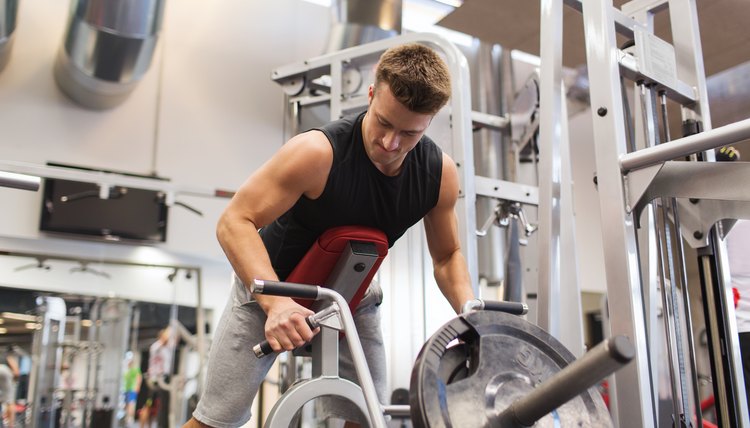
Martin Dimitrov
1. Deadlift Drop Set
Set up a straight bar for a conventional deadlift (feet hip-width apart and hands on the outside of the knees) in front of a rack with pins set at mid-shin level. Alternatively, you can use two boxes that are at mid-shin level on which you can place the weights of the bar. Complete as many perfect reps as possible with a traditional straight-bar deadlift. Let’s say you are using a weight that allows you to pull five perfect reps. After five reps, switch to a sumo deadlift by widening your stance, turning your feet out slightly and grabbing the bar with a grip that is just inside shoulder-width apart. The sumo deadlift typically allows you to move more weight as the wider stance brings you closer to the floor decreasing the distance the bar needs to travel. And now that you’re fatigued, the same weight you used on the conventional deadlift is good. Once you are one rep away from technical failure, place the bar on the pins you set before continuing with rack-pull deadlifts (deadlifting from the elevated start). Finish the drop set completing as many perfect rack-pull deadlifts as possible.
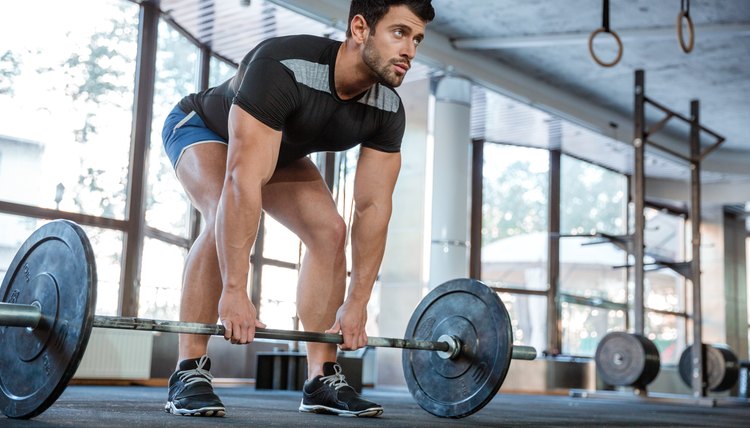
Martin Dimitrov
2. Romanian Deadlift Drop Set
For the Romanian deadlift (RDL), grab a barbell or pair of dumbbells and first complete a set of single-leg deadlifts. Make sure to keep your core engaged and hips level as you start on one leg. Push your hips back, not allowing the hips to rotate toward the ceiling as you reach your free leg back as long as you can. Drive through the grounded heel to return to a standing position. You should feel the work taking place in the hamstrings and glutes of the down leg. Complete reps on the other leg (let’s say you selected a weight that allows for six per side), and then immediately switch to a regular RDL with both legs down. Continue to keep the abs engaged and back flat as you push your hips back, feeling the work take place in both hamstrings and glutes. Complete as many perfect reps as possible of the regular RDL to finish the drop set.
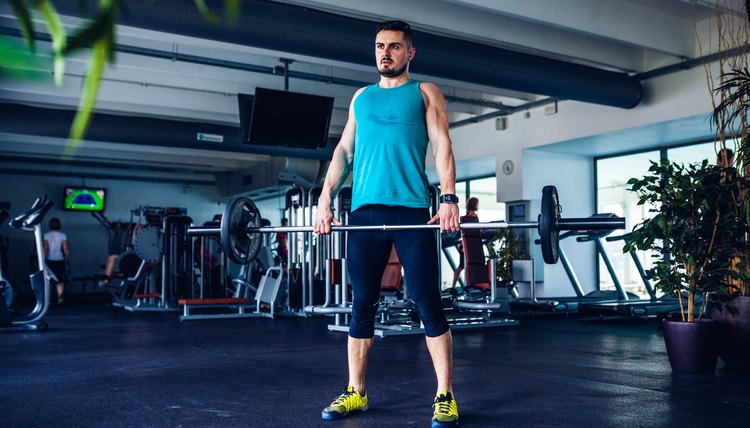
Martin Dimitrov
3. Squat Series Drop Set
The squat series drop set utilizes both legs as well as center-of-gravity mechanics. First, set a rack with a barbell and resistance for a split squat using a front-squat grip. Place the bar across the front of your shoulders. Step back with one foot and drop into a split squat so the back knee is underneath the hip and the front shin is vertical. Push through the front heel to return to a standing position without moving the back foot. Complete for reps, and then switch to the other leg. Once you complete reps for both legs, switch to a standard front squat (you can rack the weight for a quick break before performing front squats). Keep your abs engaged so your back stays flat as you sit back into your squat. Drive through your heels and return to a standing position. After completing as many perfect reps as possible with the front squat, rack the bar and switch to a back squat by placing the barbell behind your head with the bar resting on your shoulders. Again, complete as many perfect reps as possible of the back squat to finish off the squat series drop set. Remember, as with any drop set, you should be feeling the work take place in the right spot to prevent overuse injury. In the case of the squat series, your abs, glutes and quads should be doing most of the work -- not the lower back.
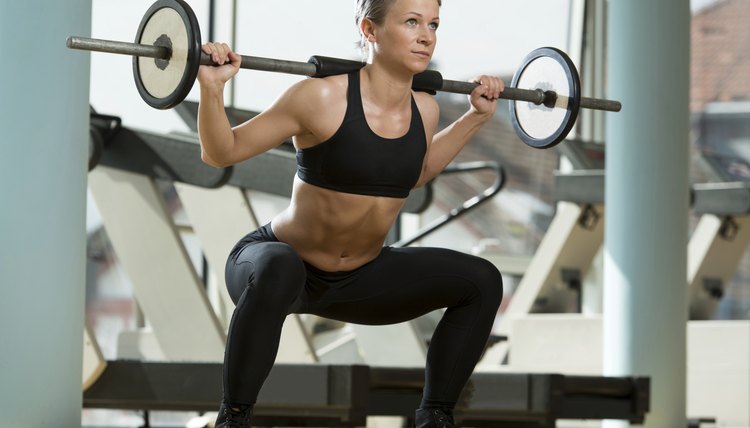
Martin Dimitrov
4. Dumbbell/Kettlebell Reverse Lunge Drop Set
With a pair of dumbbells or kettlebells, hold the weight on your shoulders in the racked position. Dumbbells will be on the shoulders vertical with one head of the dumbbell on the shoulder and your elbows straight in front of the shoulders; the kettlebells will be on the outside of the shoulders with elbows tight to your side. Step back with one foot keeping the abs engaged and the foot staying in line with the hip (don’t allow your foot to cross the midline of the body). Lightly tap the knee just below the hip before digging through your front leg heel to push yourself back up to standing. Complete all reps on one leg before switching to the other. You should feel the work taking place in the core, hamstring and glutes of the front leg. Complete reps on both legs before switching to hold the weights at your sides. Continue to perform the reverse lunge, completing reps on one leg before switching to the other. Once you have completed reps on both legs, put down one dumbbell/kettlebell and finish off the drop set by performing single-arm reverse lunges. For the single-arm reverse lunge, hold the weight in the hand on the same side as the leg that is going backward. The reverse lunge drop set takes advantage of center of gravity (dropping the weight from the shoulder to the side) as well as a limb use, which decreases the overall load of the exercise for the end of the set.
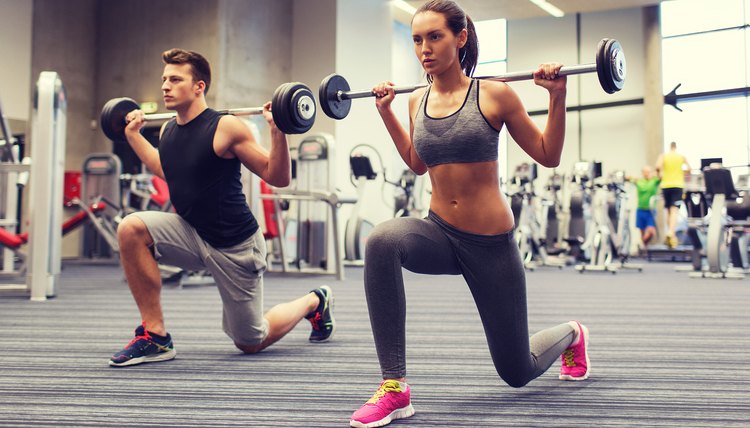
Martin Dimitrov
5. Pull-Up Series Drop Set
Begin the pull-up drop set by completing as many perfect reps as possible of a wide-grip pull-up. Grab a pull-up bar four to six inches wider than shoulder width. Keep your abs engaged to prevent your back from arching and ribs from flaring out as you pull yourself up, bringing your chest to the bar. Focus on keeping your shoulder blades from tipping forward at the top of the pull. After completing reps for the wide grip, switch to a neutral-grip pull-up. Grab the bar in a neutral (parallel) grip so that your hands are shoulder-width apart and your knuckles are facing each other. Complete as many reps as possible, focusing on the same cues as the wide-grip pull-up. Lastly, switch to the chin-up by grabbing the bar with an underhand grip. Complete as many perfect reps as possible, keeping the focus the same. By switching the grip from wide to neutral to underhand, you are progressively decreasing the mechanical challenge and therefore allowing yourself to extend the set.
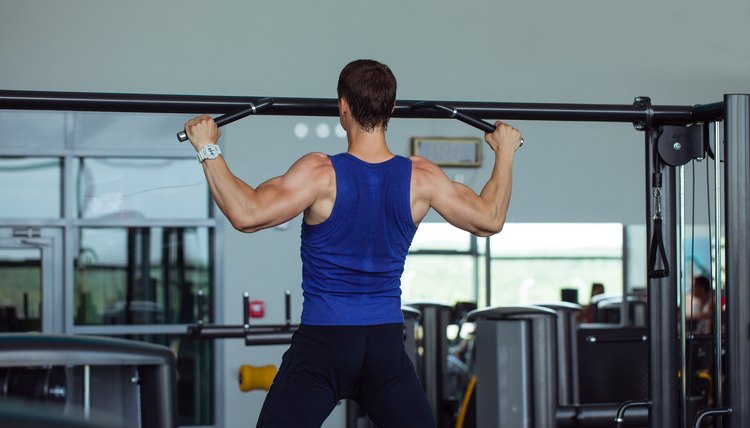
Martin Dimitrov
6. Single-Arm Dumbbell Row Drop Set
For the single-arm dumbbell row drop set you’ll be going from a less stable base to a more stable base. Start by utilizing a single-leg position. Begin with your feet about two feet from a box or bench. Sit your hips back as if you are performing a deadlift. Place one hand on a box or bench. Raise the leg on the same side as the down hand and push the leg back so that it’s straight. Keeping the abs engaged to prevent the body from twisting, row a dumbbell with the hand on the same side as the down leg. Complete for reps, and then switch sides (you will switch the legs as well). After completing reps with the single-leg position, switch to the split-stance position. From the same starting position with one hand on a box or bench, step the foot on the opposite side of the hand on the box back as if you were going to perform a reverse lunge. Keep the hips from shifting as you perform the dumbbell row with the same-side arm as the leg that is back. After completing all reps in the split-stance position on both sides, perform dumbbell rows from the two-foot position (push your hips back and place one hand on the box and row with the other hand).

Martin Dimitrov
7. Dumbbell Press Series Drop Set
For the dumbbell push series you’ll be using the angle of push for the drop set. Start by completing reps of the overhead dumbbell press. Using an adjustable bench in the seated position so the bench is nearly vertical, keep your abs engaged so the lower back does not arch as you push the dumbbells overhead. Make sure to bring the shoulder blades up with the arm as you push overhead to help prevent impingement. After completing all reps of the overhead press, switch to roughly 35 to 40 degrees for the incline dumbbell press. Complete as many perfect reps as possible for the incline press before dropping the bench to the flat position. Finish the drop set by performing as many perfect reps as possible of the flat dumbbell bench press. Make sure to keep the abs engaged and the back flat to the bench as you fatigue.

Martin Dimitrov
8. Push-Up Series Drop Set
Like the dumbbell push drop set, the push-up drop set utilizes the angle of push to extend the set. Start by completing as many perfect reps as possible of a feet-elevated push-up. Place your feet on a box or bench that is 12 to 18 inches high. Keep your abs engaged to prevent the lower back from arching and hips from sagging as you “pull” yourself down into a push-up. Keep the shoulder blades from tipping forward at the bottom before you push yourself back to the top position, completing as many perfect reps as possible. Next, drop to a regular push-up position with feet on the floor. Complete as many perfect reps as possible from this position. Lastly, elevate your hands to the box that originally elevated your feet. Again, complete as many perfect reps as possible from this position to complete the push-up drop set.
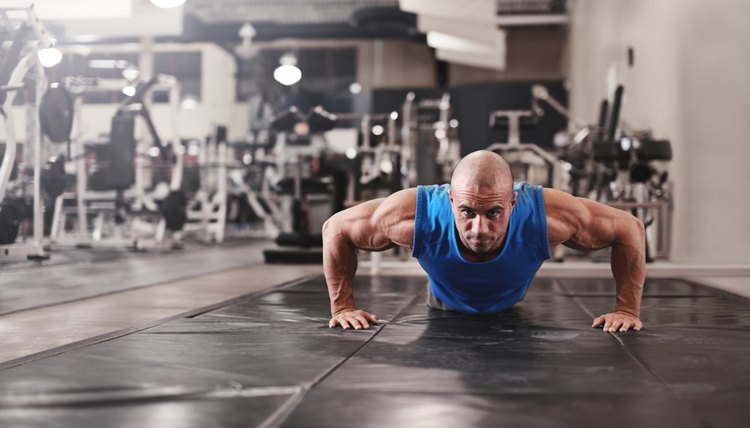
Martin Dimitrov
What Do YOU Think?
Have you ever used drop sets in your workouts? Which ones? Were any of them on this list? Which ones would you add? Did you notice results? How did you feel afterward? If you’ve never tried them, do you think you will now? Which ones sound like they’d work best with your goals?
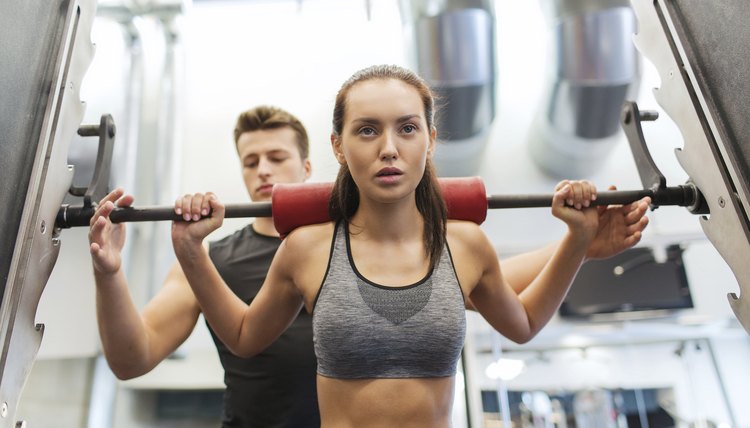
Martin Dimitrov
Writer Bio
Kyle Arsenault is a performance coach, author and former intern of the renown Cressey Performance. Now working with Momentum PT, he specializes in combining principles of physical therapy with strength and conditioning to enhance overall performance for his competitive athletes as well as his general population athletes.
